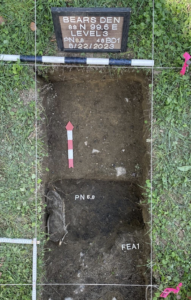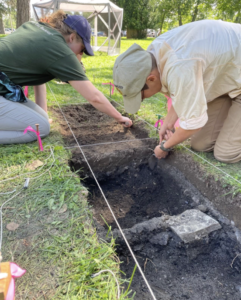The Old Town City Council may be involved in controversy regarding reports of misinformation, private information doxxing and dismissal of hunting concerns. Many outlets, such as AP News, the Portland Press Herald and News Center Maine, covered the recent news that the Sunday hunting ban has been upheld by Maine’s Supreme Court. A lawsuit in 2022 argued that the state’s “right to food” amendment should permit hunting on Sundays as to give enough time to forage food. Hunters and landowners alike are engaging in this debate.
There have been two distinct sides of the argument. Mainers who are in favor of Sunday hunting feel they are denied an important chance to acquire meat for their families.
Given Maine’s implied land use laws, those in opposition believe hunting on Sundays should continue to be banned to allow one day a week where they can be on their land without hunters. Although, if land is not explicitly posted, anyone may hunt without permission.
Since 94% of Maine’s forest land is privately owned with over half being publicly accessible, regulations are debated at a state-level. The local underbelly of the issue revealed how far people will go to protect their right to hunt.
Longstanding Old Town resident Patricia Lech presented a perspective raising questions about the veracity of local government in hunting contexts. Lech holds concerns about the deer population in Old Town and public safety in the backdrop of loose hunting regulations in Maine. However, in presenting her concerns to the Old Town City Council, she was allegedly met with a level of enmity and misinformation.
Lech initially addressed the Council with numerous other concerned citizens in September 2023 in hopes of decreasing dangerous hunting practices. In Old Town, Lech discovered a diagram indicating that there is a 100-yard limit on hunting in residential areas.

This diagram and other residential laws around hunting sparked concern regarding health and safety of both deer populations and the residents in Old Town and Orono.
“Prior to 2021 in Maine, there was no limit on how close you can hunt near homes. In 2021, Statute was modified to limit bow hunting on property within 100 yards of home without property owner’s permission,” said Lech.
In Lech’s opinion, 100 yards is too close in proximity to a building.
“Hunters do not say what happens after they wound a deer. Not all shot deer are going to stay in the little one-third of an acre backyard where they are shot,” Lech said. “No one wants to watch animals die outside of their windows.”
Given the presence of children and families, the distance does not account for what happens when shot deer cannot be tracked. In 2006, one article accredited forty-six deer to have been “harvested” on Marsh Island with four shot deer that were not found regardless of the abilities of experienced hunters and use of tracking dogs.
Lech discusses three other concerns she has regarding the general use of hunting in suburban areas (space that is not completely rural such as Old Town, Orono and on Marsh Island). Firstly, she mentions a study from Penn State that warned of the possibility of increased deer/auto-collisions resulting from dense hunting, counterintuitive to the basic notion that hunting will decrease deer collisions.
“When there is a heavy density of hunters, it drives the deer from that area and so I think that is what is happening. People are saying they are seeing deer having their babies in the center of Old Town. They never saw a deer there before,” Lech said, “It [dense hunting] changes the deer migration. The deer are going to move more at night than during the day because they realize hunting is going on during the day. It is harder to avoid deer during the night.”
Additionally, Lech referenced another point of view, that Lyme disease may not be decreasing with more hunting, as originally hypothesized. The Maine Department of Fishing and Wildlife increased deer harvest in 2017 to address Lyme disease that can be transported through deer, but Lyme continued to increase. Instead, Lech encouraged homeowners to prevent Lyme in more homeopathic ways, using permethrin treated cotton in gardens and practicing tick safety.
Lech theorized that increased hunting in more residential areas may give way to older hunters and inexperienced hunters that do not go deeper into Maine wilderness to forage. The proximity advantage may be less demanding for a hunter with possible eyesight issues, health issues and inexperience, but in return creates risk for those who live in such areas.
Lech addressed these issues with many others at council meetings, emphasizing the legitimacy of her concerns. In return, they were dismissed on every issue, according to Lech. Laws and regulations that limited non-permit hunting in Marsh Island were not transparent as Lech had to personally seek out many local laws and ordinances.
Beyond getting dismissed, Lech claimed that the minutes of several council meetings were not honestly recounted. In one instance, Lech attested about six people came to council to address these issues, but only three were accounted for. In a more striking example, Lech alleged minutes were erased completely from the Oct. 16 meeting. On Nov. 20, the warden attended the meeting, but was “not available to talk” about the citizens’ concerns, according to Lech.
Finally, Lech and other residents’ personal home addresses were released into the minutes, even though they were not once presented or asked for in the meetings themselves. At the next hearing, Lech asked for that private, confidential information to be taken off of the minutes and the city’s public database. Her request was denied.
To Lech, the new controversy and conversation regarding the Sunday Hunting ban being protected is the result of a larger concern. Are the interests of the people being heard by the government? For this resident, there is a denial of ordinances and dismissal of concerns yet to be addressed.
The Maine Campus reached out to the Old Town City Council for a statement and has not received a response.



